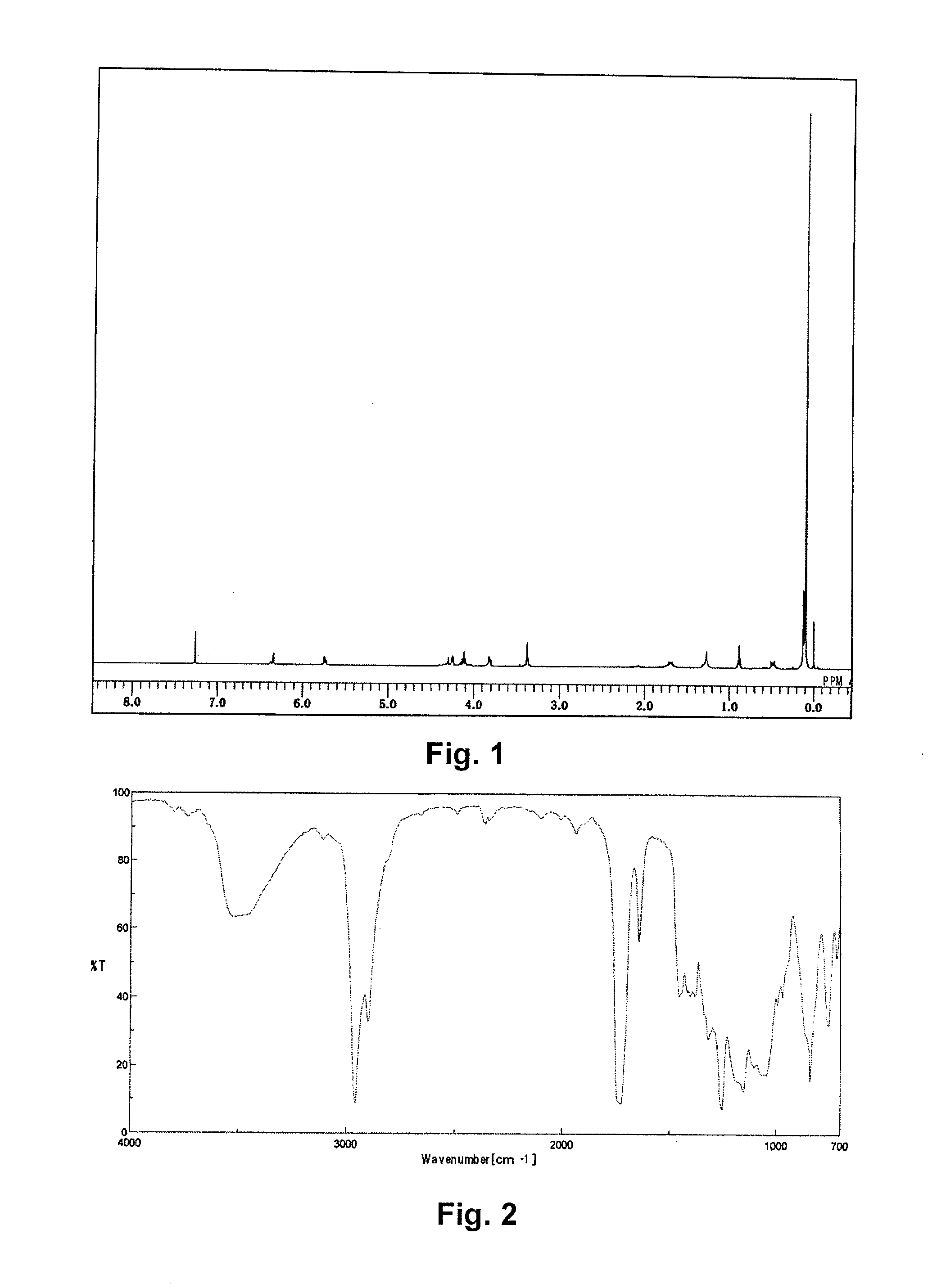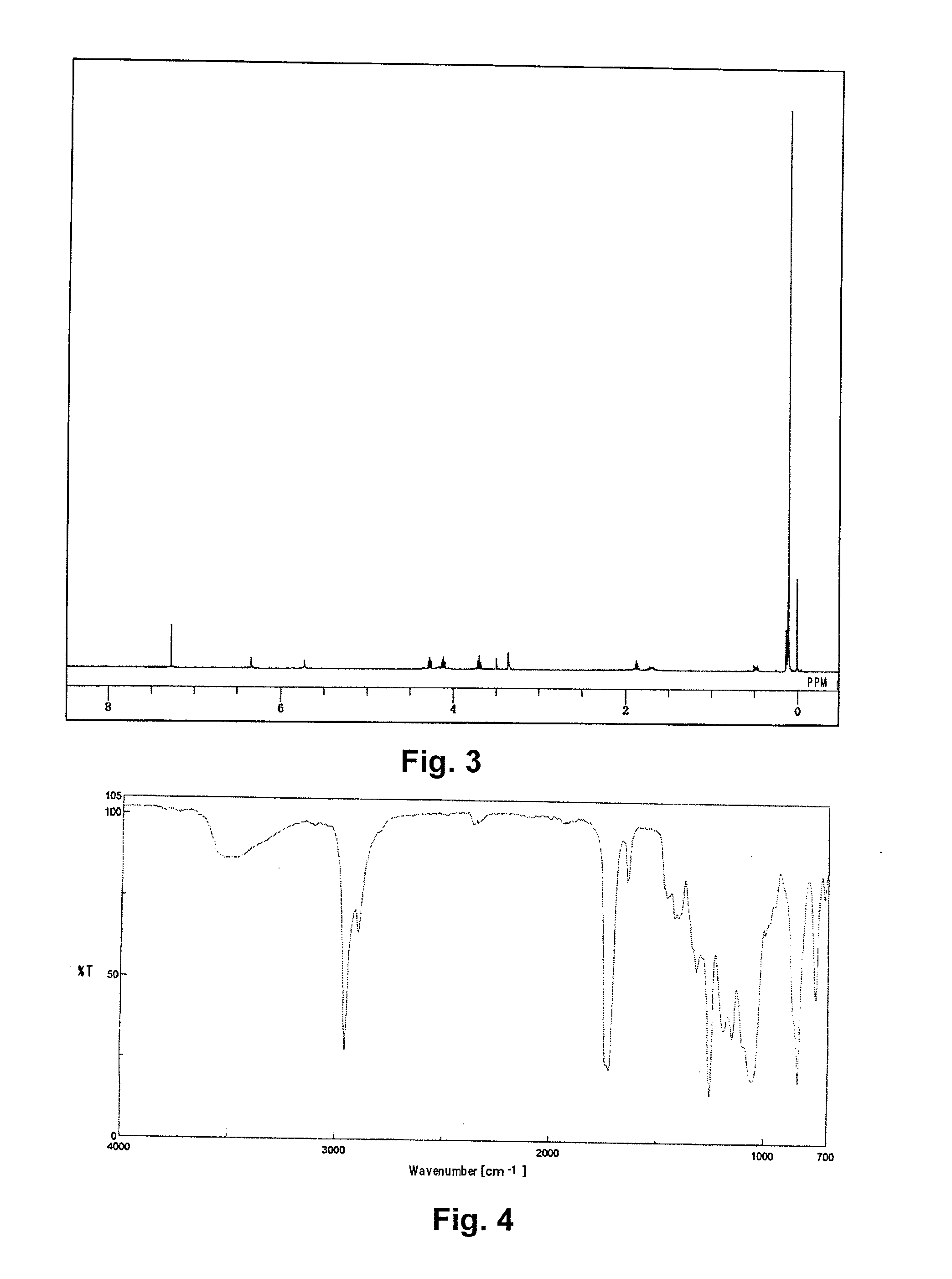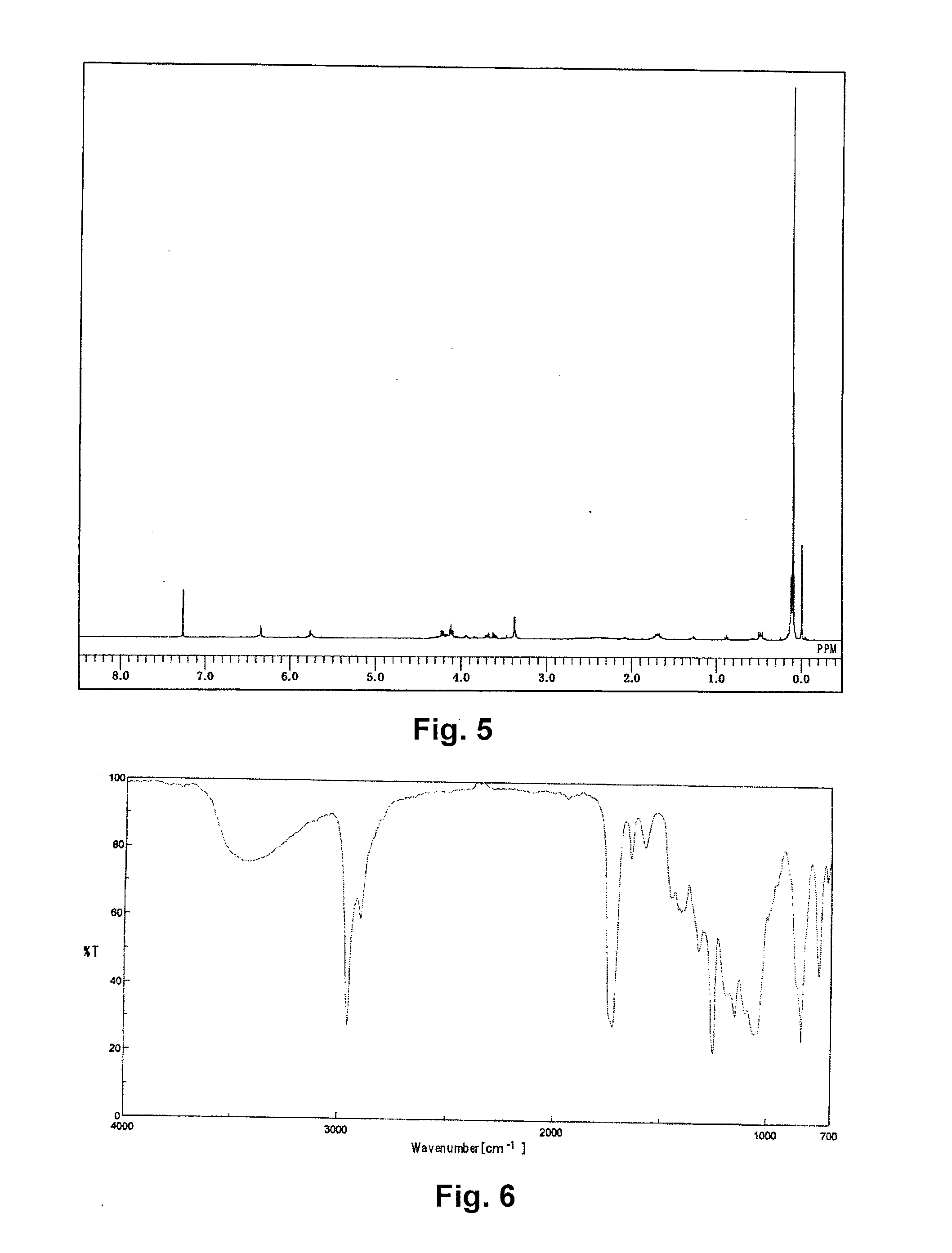Silicone monomer
- Summary
- Abstract
- Description
- Claims
- Application Information
AI Technical Summary
Benefits of technology
Problems solved by technology
Method used
Image
Examples
example 1-1
Synthesis of [tris(trimethylsiloxy)silyl]propyl=3-(2-hydroxyethoxy)carbonyl-3-butenate) (abbreviated as EitaS)
[0070]A 1 L pear-shaped flask was charged with 30.00 g of itaconic acid anhydride (0.268 moles, manufactured by TOKYO CHEMICAL INDUSTRY CO., LTD.), 33.23 g of ethylene glycol (0.536 moles), and 0.095 g of 4-methoxyphenol, and stirred at 80° C. for 8 hours. The reactant solution was mixed with 400 g of N,N-dimethylformamide, to which 14.80 g of potassium carbonate (0.0.107 moles) was added, and the solution was stirred at 50° C. for 30 minutes to dissolve. To the resulting solution, 49.76 g of 3-iodopropyl tris(trimethylsiloxy)silane (0.107 moles) was added dropwise, and stirred for 6 hours.
[0071]After cooling, the reactant solution was transferred to a 3 L-separating funnel, diluted with 800 g of heptane, and washed with 800 g of ion exchanged water and then with a 2% aqueous solution of sodium sulfate. Then 800 g of methanol was added to the heptane phase to extract EitaS, ...
example 1-2
Synthesis of [tris(trimethylsiloxy)silyl]propyl=3-(2-hydroxypropoxy)carbonyl-3-butenate) (Abbreviated as PitaS)
[0078]A 1 L pear-shaped flask was charged with 30.00 g of itaconic acid anhydride (0.268 moles, manufactured by TOKYO CHEMICAL INDUSTRY CO., LTD.), 40.74 g of 1,3-propanediol (0.536 moles), and 0.10 g of 4-methoxyphenol, and stirred at 80° C. for 8 hours.
[0079]The reactant solution was mixed with 400 g of N,N-dimethylformamide, to which 14.80 g of potassium carbonate (0.0.107 moles) was added, and the solution was stirred at 50° C. for 30 minutes to dissolve. To the resulting solution, 49.76 g of 3-iodopropyl tris(trimethylsiloxy)silane (0.107 moles) was added dropwise, and stirred for 6 hours.
[0080]After cooling, the reactant solution was transferred to a 3 L-separating funnel, diluted with 800 g of heptane, and washed with 800 g of ion exchanged water and then with a 2% aqueous solution of sodium sulfate. Then 800 g of methanol was added to the heptane phase to extract Pi...
example 1-3
Synthesis of [tris(trimethylsiloxy)silyl]propyl=3-(2,3-dihydroxypropoxy)carbonyl-3-butenate) (Abbreviated as GlitaS)
[0088]A 1 L pear-shaped flask was charged with 30.00 g of itaconic acid anhydride (0.268 moles, manufactured by TOKYO CHEMICAL INDUSTRY CO., LTD.), 49.31 g of glycerin (0.536 moles), and 0.11 g of 4-methoxyphenol, and stirred at 80° C. for 8 hours. The reactant solution was mixed with 400 g of N,N-dimethylformamide, to which 14.80 g of potassium carbonate (0.0.107 moles) was added, and the solution was stirred at 50° C. for 30 minutes to dissolve. To the resulting solution, 49.76 g of 3-iodopropyl tris(trimethylsiloxy)silane (0.107 moles) was added dropwise, and stirred for 6 hours.
[0089]After cooling, the reactant solution was transferred to a 3 L-separating funnel, diluted with 800 g of heptane, and washed with 800 g of ion exchanged water and then twice with a 2% aqueous solution of sodium sulfate. Then 800 g of methanol was added to the heptane phase to extract Gli...
PUM
| Property | Measurement | Unit |
|---|---|---|
| Percent by mass | aaaaa | aaaaa |
| Hydrophilicity | aaaaa | aaaaa |
| Oxygen permeability | aaaaa | aaaaa |
Abstract
Description
Claims
Application Information
 Login to View More
Login to View More - Generate Ideas
- Intellectual Property
- Life Sciences
- Materials
- Tech Scout
- Unparalleled Data Quality
- Higher Quality Content
- 60% Fewer Hallucinations
Browse by: Latest US Patents, China's latest patents, Technical Efficacy Thesaurus, Application Domain, Technology Topic, Popular Technical Reports.
© 2025 PatSnap. All rights reserved.Legal|Privacy policy|Modern Slavery Act Transparency Statement|Sitemap|About US| Contact US: help@patsnap.com



